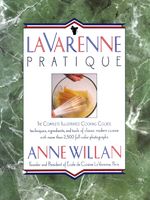Advertisement
Terrines
Appears in
By Anne Willan
Published 1989
There are many types of terrine mold; all should have a tight fitting lid, which is often sealed with a luting paste of flour and water during cooking.
To keep a terrine mixture moist, the mold is always lined with fat, usually barding fat. Caul fat may be used instead; it cooks to an attractive lacy pattern on top. Fat bacon, the most common substitute for barding fat, adds attractive stripes but has a pronounced taste that may overwhelm delicate mixtures; if using bacon, add less salt to the stuffing. The fatty skin of duck or goose is a good lining for poultry mixtures.


